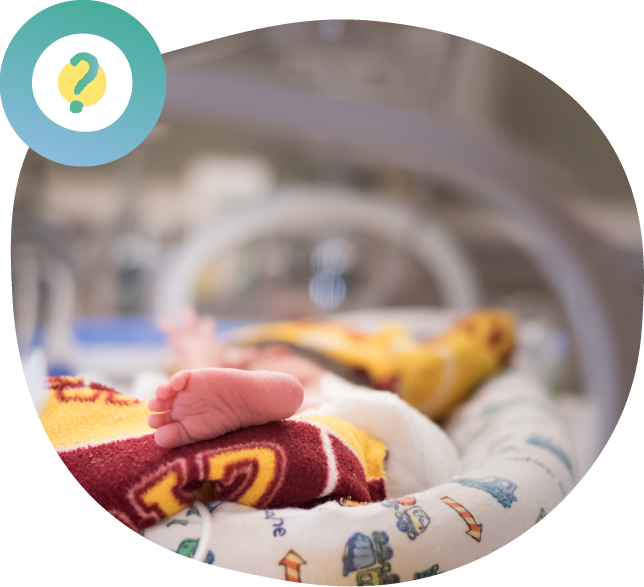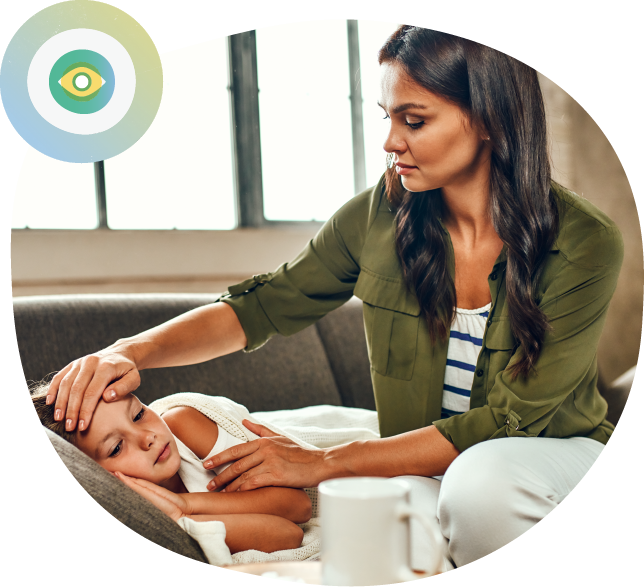

The strongest, most natural feeling you experience as a parent or caregiver is to protect your child.
And we can help you get prepared and be more aware about the risks of respiratory syncytial virus (RSV).
So here are four key facts every parent or caregiver should be aware of:

RSV exhibits seasonal patterns, with heightened transmission occurring during specific periods, typically from winter to spring in temperate regions. For example in a hospital in Sharjah, RSV infections peaked in October and November.1

RSV disease is mostly mild, but in some cases it can cause lower respiratory tract infections (LRTIs), which are more likely to become severe in infants under one year old.2,3

Antibiotics are often unnecessarily prescribed for viruses like RSV that cause respiratory (lung) infections.4
There are currently no routine specific medicines for RSV and it is generally managed with supportive care and symptom relief. In more severe illness, treatment may include oxygen, feeding support, and hydration.2,5

You can help protect babies against RSV with some simple steps:6
There are a number of different reasons why RSV can impact a baby of any age. Select from the topics below to learn more about how a baby’s still-developing immune system and lungs could put them at a higher risk of severe RSV infections than older age groups, as well as how RSV disease could lead to bronchiolitis and pneumonia.
A baby’s immune system continues to develop and mature after birth.7 In the early stages of life this may contribute to the risk of developing lower respiratory tract infections, such as bronchiolitis, due to RSV, compared to other age groups.7-9
RSV spreads seasonally. In temperate regions, it is more common in the winter months through to spring.1
Every infant is at risk of RSV infection and disease, whether they are born before the RSV season starts or if they are born during the season.10–13
A baby’s lungs continue to develop throughout infancy and childhood, and in the first year of life their airways are small and fragile. This may contribute to making babies more vulnerable to developing severe illness following an RSV infection, compared to other age groups.14–16
Bronchiolitis is an illness caused by viral infection in the smallest airways of the lungs, called bronchioles. When these become inflamed and swell, mucus may build up and lead to congestion and difficulty breathing.3
In most babies, an RSV infection usually causes symptoms like those of a common cold. But in some babies, this can progress to more severe symptoms, such as wheezing, difficulties with their breathing, trouble feeding, and fever.2
Other symptoms or signs may occur and if you are worried about your child's health, always seek medical advice.
In some cases, babies with bronchiolitis may need to be admitted to hospital.17
RSV can also cause pneumonia, an infection which can cause inflammation and swelling in the lung alveoli (the tiny sacs at the end of the airways).18,19 Some possible symptoms of pneumonia could include a cough, difficulty breathing, or a high temperature.19 You might also notice that your child gets irritable or tired, or finds it difficult to eat.18
Other symptoms or signs may occur and if you are worried about your child’s health, always seek medical advice.
In some cases, babies with pneumonia may need to be admitted to hospital.20
As a parent, you know instinctively when something is wrong.
But with RSV, symptoms can look like other illnesses.
Possible symptoms of RSV infection to look out for can include:19
• Cold-like symptoms such as a runny nose
• Decreased activity, or irritability in very young infants
• Loss of appetite in older children or decreased feeding in babies
• Wheezing
• Fever
Any baby is at risk from serious RSV illnesses like bronchiolitis and pneumonia.2
• They are having difficulty breathing.
• They are Not drinking enough fluids.
• They are experiencing worsening symptoms.
Always talk to your healthcare provider if you are worried about your child's health or any signs or symptoms, including any beyond those mentioned above.


• Your child has difficulty breathing.
• Your child is Not drinking enough fluids.
• Your child is experiencing worsening symptoms.
1. Incidence of RSV Among Young Children in UAE (2023). J Nat Sci Biol Med, doi:10.4103/jnsbm.JNSBM_14_1_9.
2. Piedimonte G and Perez MK. Pediatr Rev 2014; 35(12): 519–530.
3. Meissner HC. N Engl J Med 2016; 374(1): 62–72.
4. Obolski U et al. J Glob Antimicrob Resist 2021; 27: 303–308.
5. Barr R et al. Ther Adv Infect Dis 2019; 6: 2049936119865798.
6. Centers for Disease Control and Prevention (CDC). RSV prevention. 2021. Available at: www.cdc.gov/rsv/about/prevention.html. Accessed: February 2023.
7. Simon AK et al. Proc Biol Sci 2015; 282(1821): 20143085
8. Lambert L et al. Front Immunol 2014; 5(466): 1–14.
9. Esposito S et al. Hum Vaccin Immunother 2016; 12(7): 1700–1706.
10. Demont C et al. BMC Infect Dis 2021; 21(1): 730.
11. Mira-Iglesias A et al. Influenza Other Respir Viruses 2022; 16(2): 328–339.
12. Hall CB et al. Pediatrics 2013; 132(2): e341–348.
13. Bianchini S et al. Microorganisms 2020; 8(12): 2048.
14. Di Cicco M et al. Pediatr Pulmonol 2021; 56(1): 240–251.
15. Pickles RJ and DeVincenzo JP. J Pathol 2015; 235(2): 266–276.
16. Hussain M et al. Biochim Biophys Acta Mol Basis Dis 2017; 1863(12): 3226–3242.
17. National Health Service (NHS). Bronchiolitis. 2022. Available at: http://www.nhs.uk/conditions/bronchiolitis/. Accessed: February 2023.
18. Pneumonia: Symptoms and causes. Available at: www.mayoclinic.org/diseases-conditions/pneumonia/symptoms-causes/syc/20354204. Accessed: February 2023.
19. Centers for Disease Control and Prevention (CDC). Symptoms and care. 2021. Available at: www.cdc.gov/rsv/about/symptoms.html. Accessed: February 2023.
20. Pneumonia: Diagnosis and treatment. Available at: www.mayoclinic.org/diseases-conditions/pneumonia/diagnosis-treatment/drc-20354210. Accessed: February 2023.
21. Smyth RL and Breary SP. Encyclopedia of Respiratory Medicine. Bronchiolitis. Elsevier Ltd. 2006
22. CDC. (n.d.). RSV symptoms. Retrieved from https://www.cdc.gov/rsv/about/symptoms.html.